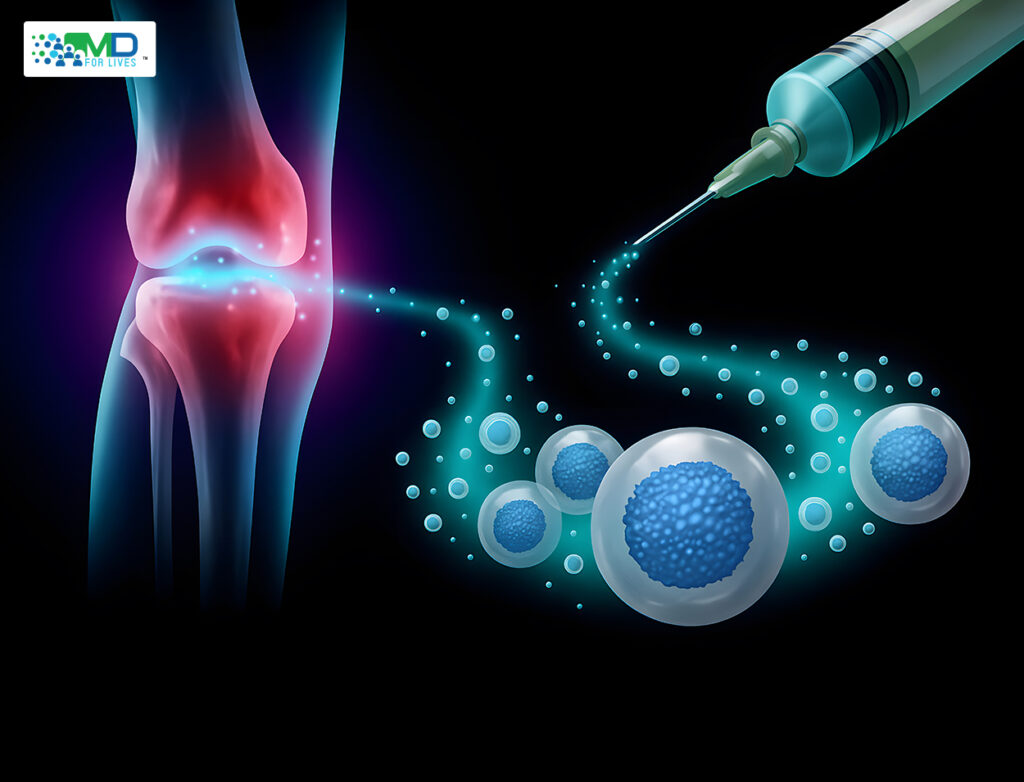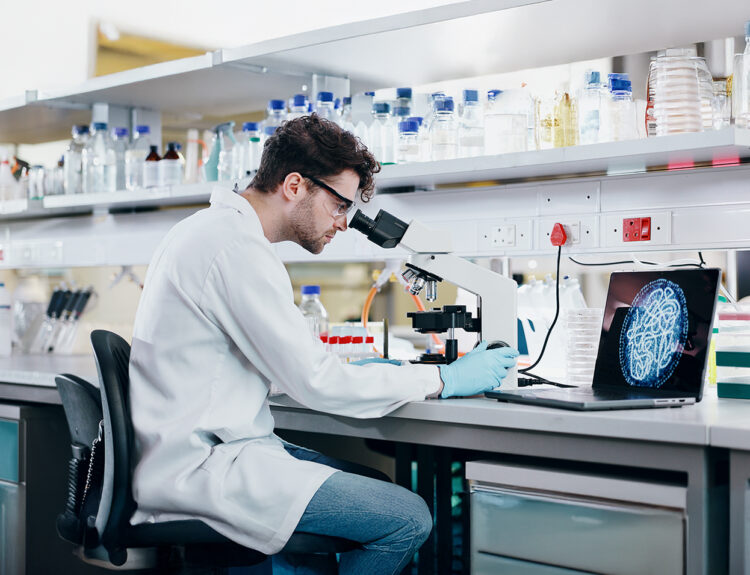In oncology, many breakthroughs occur not from entirely new discoveries, but from reimagining established technologies in novel ways. Bioactive glass is a prime example. Traditionally valued in orthopedics and dentistry, bioactive glass for bone regeneration has long been a trusted tool for repairing and strengthening skeletal structures.
What makes its current exploration so compelling is the shift from structural support to therapeutic potential. When combined with gallium, a metal already recognized for its anticancer activity, bioglass could evolve into more than a biomaterial. It represents the possibility of a dual-action therapy – one that targets cancer cells with precision, while simultaneously rebuilding bone integrity compromised by both disease and treatment.
This convergence of regenerative medicine and oncology opens a new frontier; a treatment approach that does not merely fight cancer but actively works to restore what it destroys.
A Material Reimagined: Bioactive Glass in the Fight Against Cancer
Bioglass has long been recognized for its conventional uses in clinical practice. In orthopedic surgery, it is widely employed to fill bone defects, stimulate new bone growth, and improve the stability of implants. In dentistry, it has shown equal promise, supporting procedures ranging from periodontal repair to bone grafting, where it consistently delivers reliable outcomes. Its strength lies in its ability to bond seamlessly with living tissue and actively promote regeneration rather than serving as a passive scaffold.
What makes its current investigation in oncology so striking is the conceptual leap being attempted. A material once viewed solely as a structural aid is now being explored as a therapeutic agent in its own right. The use of gallium into the bioactive glass matrix represents an effort to transform a trusted regenerative material into a dual-function treatment platform.
This combination aims to unite two critical therapeutic goals:
1. Targeting and destroying malignant cells within bone tumors such as osteosarcoma.
2. Facilitating bone regeneration in areas weakened or destroyed by both the cancer and its treatments.
If successful, this shift would expand the role of bioactive glass beyond its orthopedic and dental roots. It could also set a precedent for reengineering biomaterials to serve active, disease-modifying roles in oncology. Such an approach points to a future where regenerative medicine and cancer therapeutics intersect, creating holistic treatments that improve survival, as well as restore structure and function for patients.
Laboratory Success: Encouraging but Preliminary
One of the most compelling early findings is that Bioactive Glass–Gallium Therapy has demonstrated a remarkable 99% success rate in laboratory studies for eliminating osteosarcoma cells. This figure is undeniably impressive and understandably generates excitement. Yet, as an oncologist, I approach these results with measured optimism.
Laboratory success in vitro is a valuable milestone. But it represents only the first step on a long and complex journey. Cancer cells grown in a petri dish do not capture the intricacies of the human body. The transition from controlled laboratory conditions to living systems is often where promising therapies falter.
The tumor microenvironment in vivo is shaped by immune surveillance, blood supply, stromal interactions, and the metabolic state of the host – all factors absent or simplified in vitro. Additionally, the challenges of drug delivery, tissue penetration, and maintaining therapeutic concentration levels can significantly influence outcomes. What appears straightforward in the lab can become unpredictable, even resistant, in patients.
This is why early laboratory success, while noteworthy, must be followed by rigorous preclinical testing in animal models to better approximate human physiology. These models help reveal critical insights into safety, biodistribution, pharmacokinetics, and biological interactions that cell cultures cannot capture. Only after such hurdles are addressed can a therapy advance to the crucial stage of human clinical trials, where its true potential is revealed.
Thus, while the high in vitro efficacy of bioactive glass–gallium therapy signals genuine promise, it must be regarded as a launching point, not a conclusion. The real measure of success will lie in whether these laboratory findings translate into reproducible, safe, and effective outcomes in patients facing the realities of osteosarcoma.
The Dual Promise: Cancer Control and Bone Regeneration

Despite these cautions, what makes the bioactive glass–gallium approach so intriguing is its potential to address two critical challenges simultaneously:
1. Tumor Elimination: Osteosarcoma, particularly in advanced or recurrent stages, is notoriously difficult to manage. Even with surgery, chemotherapy, and radiation, recurrence rates remain concerning. A localized therapy that shows strong anticancer activity could be a valuable addition to the therapeutic arsenal.
2. `Bone Regeneration: The structural damage left by osteosarcoma, and by aggressive treatment modalities themselves, poses long-term complications for patients. Many survivors struggle not just with the threat of recurrence, but with permanent skeletal weakness, deformity, or reduced function.
Bioglass is uniquely suited to facilitate the restoration of bone integrity, potentially allowing patients not only to survive but to regain a higher quality of life.
This dual capability of bioactive glass cancer disease eradication, coupled with tissue repair, is rare in oncology. It represents a meaningful shift toward therapies that address both survival and functional recovery.
Critical Considerations Before Clinical Application of Bioactive Glass
While the scientific rationale is exciting, a cautious and thorough approach to evaluation is essential before considering this therapy for patients.
Several important questions remain:
- Safety Profile: Use of gallium, while possessing anticancer activity, is not without risks. Potential systemic toxicity, effects on vital organs, and off-target tissue interactions must be carefully characterized.
- Immunogenicity: Any novel biomaterial may trigger unintended immune responses. It is critical to assess whether the body will accept or reject this therapy in a real-world setting.
- Durability of Response: Eliminating cancer cells initially is important. But equally important is ensuring long-term suppression. Can this therapy reduce recurrence rates meaningfully over time?
- Functional Outcomes: Beyond traditional oncology endpoints such as progression-free or overall survival, researchers should prioritize functional recovery, bone strength, and patient-reported outcomes like mobility and pain reduction.
Only once these questions are systematically addressed can we consider integrating bioactive glass–gallium therapy into standard treatment pathways.
A Cautious but Hopeful Outlook
If early-phase clinical trials establish a favorable safety profile along with signs of efficacy, participation could be considered for patients with refractory or recurrent osteosarcoma. This population urgently needs new therapeutic options, as traditional approaches often leave limited paths forward. Innovative modalities such as bioactive glass–gallium therapy may provide a much-needed lifeline.
At this stage, bioactive glass–gallium therapy can be regarded as a promising yet unproven innovation. It represents the type of translational research that holds the potential not only to transform tumor treatment but also to improve the quality of life for patients after cancer.
The path forward must remain careful, methodical, and evidence driven. But the possibilities are undeniably significant!
FAQs
1. What is bioactive glass?
Bioactive glass, often called bioglass, is a type of biomaterial widely used in orthopedics and dentistry. It bonds with living tissue, promotes bone regeneration, and has been trusted for decades to repair bone defects and stabilize implants.
2. How is gallium used in medicine?
Gallium is a metal with proven anticancer activity. It disrupts cancer cell metabolism and growth, making it a promising agent for oncology research. When combined with bioactive glass, gallium could provide both structural support and targeted cancer control.
3. What is bioactive glass–gallium therapy?
This therapy combines the regenerative power of bioactive glass with the anticancer properties of gallium. The goal is twofold: to destroy malignant cells in bone cancers such as osteosarcoma while simultaneously repairing and regenerating damaged bone tissue.
4. Why is bioactive glass–gallium therapy important for osteosarcoma?
Osteosarcoma, particularly in advanced or recurrent stages, remains difficult to treat with surgery, chemotherapy, or radiation alone. Bioactive glass–gallium therapy offers the possibility of a localized treatment that both combats cancer and rebuilds bone—addressing survival as well as quality of life.

MDForLives is a vibrant community of healthcare professionals and patients dedicated to shaping the future of healthcare. We provide valuable global insights to healthcare companies through online surveys, interviews, and discussion forums.







